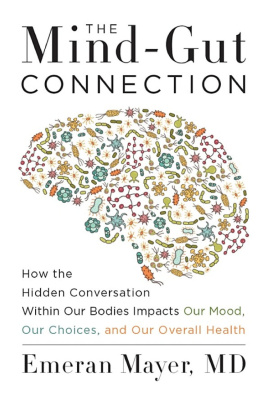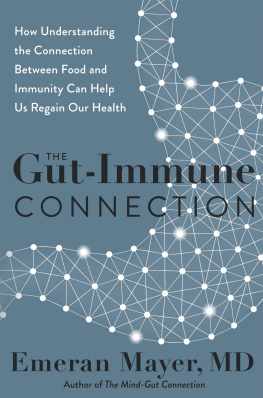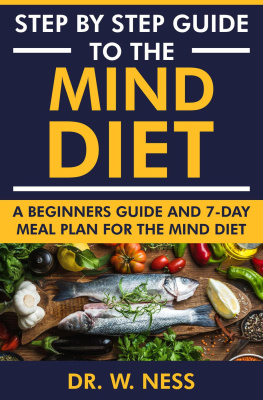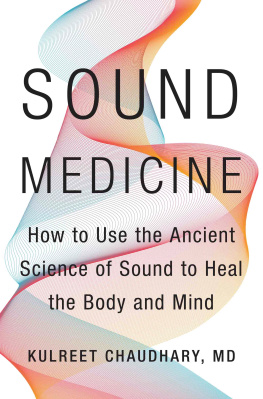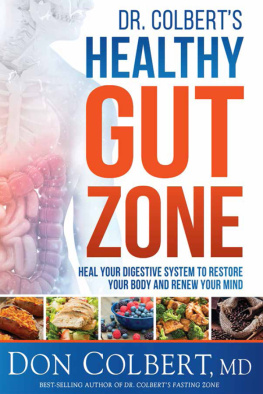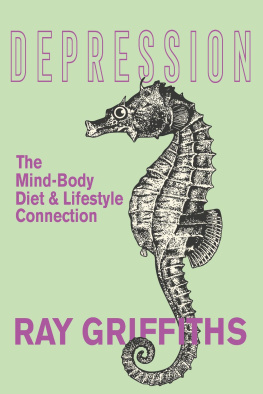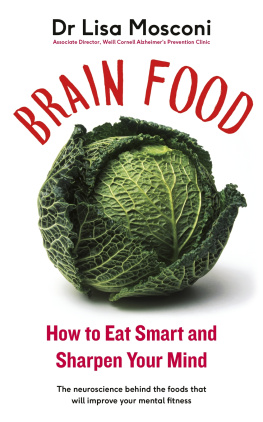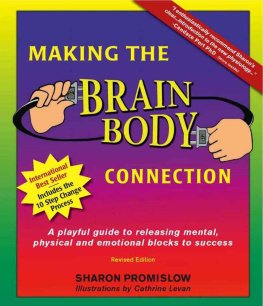listen to my gut feelings.
To my mentor, John H. Walsh,
who kindled my interest in gut-brain communications.
W hen I started medical school in 1970, doctors looked at the human body as a complicated machine with a finite number of independent parts. On average, it functioned for about seventy-five years, provided you took care of it and fed it the right fuel. Like a high-quality car, it ran well, provided that it didnt have any major accidents, and that no parts were irreversibly compromised or broken. A few routine checkups during a lifetime were all you were expected to do to prevent any unexpected calamities. Medicine and surgery provided powerful tools to fix acute problems, such as infections, accidental injuries, or heart disease.
However, over the past forty to fifty years, something fundamental has gone wrong with our health, and the old model no longer seems to be able to provide an explanation or a solution of how to fix the problems. Whats happening can no longer be easily explained simply by a single malfunctioning organ or gene. Instead, we are beginning to realize that the complex regulatory mechanisms that help our bodies and brains adapt to our rapidly changing environment are in turn being impacted by our changing lifestyles. These mechanisms do not operate independently, but as parts of a whole. They regulate our food intake, metabolism and body weight, our immune system, and the development and health of our brains. We are just beginning to realize that the gut, the microbes living in itthe gut microbiotaand the signaling molecules that they produce from their vast number of genesthe microbiomeconstitute one of the major components of these regulatory systems.
In this book, I will offer a revolutionary new look at how the brain, the gut, and the trillions of microorganisms living in the gut communicate with each other. In particular, I will focus on the role these connections play in maintaining the health of our brain and our gut. I will discuss the negative consequences on the health of these two organs when their cross talk is disturbed, and propose ways of how to obtain optimal health by reestablishing and optimizing brain-gut communications.
Even in medical school, the traditional, prevailing approach did not sit quite right with me. Despite all the studying of organ systems and disease mechanisms, I was surprised that there rarely was any mention of the brain and its possible involvement in such common diseases as stomach ulcers, hypertension, or chronic pain. In addition, I had seen a number of patients during rounds in the hospital for whom even the most thorough diagnostic investigations failed to reveal a cause of their symptoms. These symptoms mostly had to do with chronic pain experienced in different areas of the body: in the belly, the pelvic area, and the chest. So, in my third year of medical school, when it was time to begin my dissertation, I wanted to study the biology of how the brain interacted with the body, in the hope that I would develop a better understanding of many of these common diseases. Over a period of several months, I approached several professors from different specialties. Mr. Mayer, said Professor Karl, a senior internal medicine professor at my university, we all know that the psyche plays an important role in chronic disease. But there is no scientific way today that we can study this clinical phenomenon, and there is certainly no way that you can write a whole dissertation on it.
Professor Karls disease model, and that of the entire medical system, worked extremely well for certain acute diseasesdiseases that come on suddenly, dont last long, or bothin infections, heart attacks, or surgical emergencies like an inflamed appendix. Based on these successes, modern medicine had grown confident. There was hardly an infectious disease left that couldnt be cured by ever-more-powerful antibiotics. Newly developed surgical techniques could prevent and cure many diseases. Broken parts could be removed or replaced. We only needed to figure out all the minute engineering details that made the individual parts of this machine function. Depending more and more on newly evolving technologies, our health care system promoted a pervasive optimism that even the most deadly of chronic health problems, including the scourge of cancer, could be solved eventually.
When President Richard Nixon signed into law the National Cancer Act of 1971, Western medicine acquired a new dimension and a new military metaphor. Cancer became a national enemy, and the human body became a battleground. On that battleground, physicians took a scorched-earth approach to rid the body of disease, using toxic chemicals, deadly radiation, and surgical interventions to attack cancer cells with increasing force. Medicine was already using a similar strategy successfully to combat infectious diseases, unleashing broad-spectrum antibioticsantibiotics that can kill or cripple many species of bacteriato wipe out disease-causing bacteria. In both cases, as long as victory could be achieved, collateral damage became an acceptable risk.
For decades, the mechanistic, militaristic disease model set the agenda for medical research: As long as you could fix the affected machine part, we thought, the problem would be solved; there was no need to understand its ultimate cause. This philosophy led to high-blood-pressure treatments that use beta blockers and calcium antagonists to block aberrant signals from the brain to the heart and blood vessels, and proton pump inhibitors that treat gastric ulcers and heartburn by suppressing the stomachs excessive acid production. Medicine and science never paid much attention to the malfunction of the brain that was the primary cause of all these problems. Sometimes the initial approach failed, in which case even more intense efforts were used as a last resort. If the proton pump inhibitor didnt quell the ulcer, you could always cut the entire vagus nerve, the essential bundle of nerve fibers that connects brain and gut.
There is no question that some of these approaches have been remarkably successful, and for years there did not seem to be any need for the medical system and the pharmaceutical industry to change their approach; nor was there much pressure on the patient to prevent the development of the problem in the first place. In particular, there didnt seem to be a need to consider the prominent role of the brain and the distinct signals it sends to the body during stress or negative mind states. The initial remedies for high blood pressure, heart disease, and gastric ulcers were gradually replaced by far more effective treatments that saved lives, reduced suffering, and made the pharmaceutical industry wealthy.
But today, the old mechanistic metaphors are beginning to yield. The machines of forty years ago on which the traditional disease model was basedthe cars, ships, and airplaneshad none of the sophisticated computers that play a central role in todays machines. Even the Apollo rockets going to the moon had only rudimentary computing devices on board, millions of times less powerful than an iPhone and more comparable to a Texas Instruments calculator from the 1980s! Not surprisingly, the mechanistic disease models of the day did not include computing power, or intelligence. In other words, they did not consider the brain.

